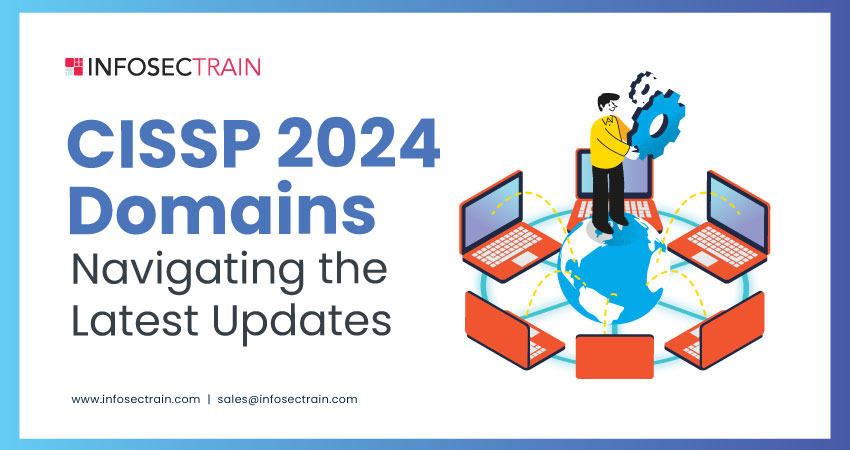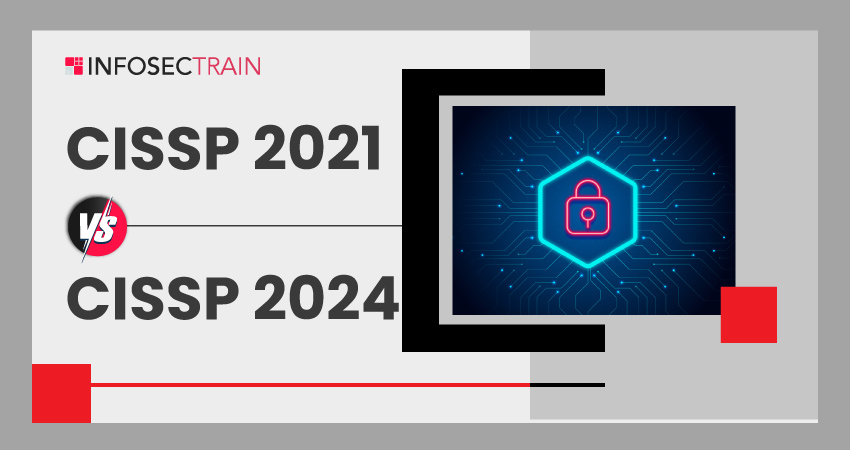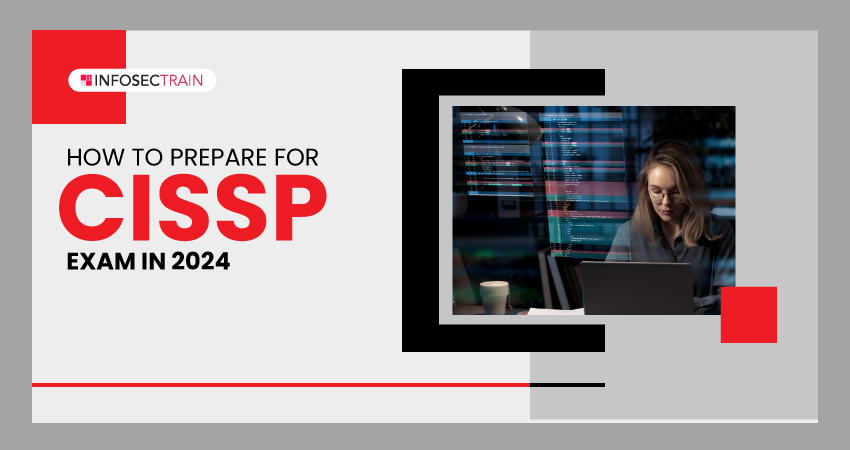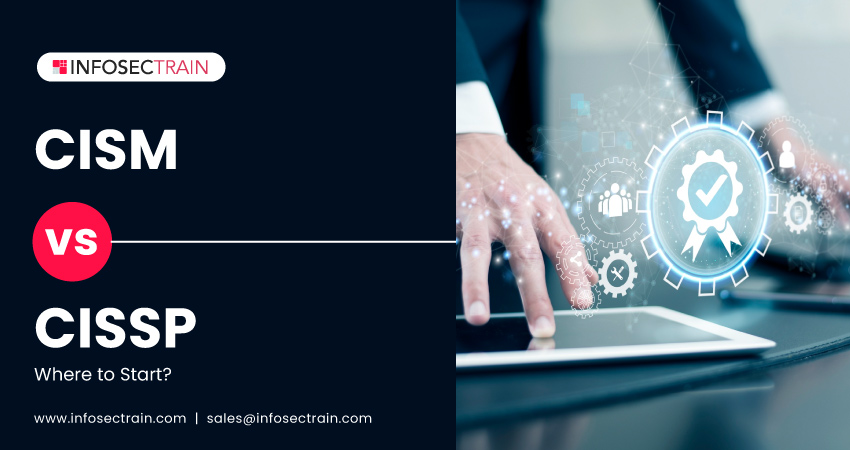Domain 1: Secure Software Concepts (12%)
1.1: Understand Core Concepts
- Confidentiality (e.g., Encryption)
- Integrity (e.g., Hashing, Digital Signatures, Code Signing, Reliability, Modifications, Authenticity)
- Availability (e.g., Redundancy, Replication, Clustering, Scalability, Resiliency)
- Authentication (e.g., Multi-Factor Authentication (MFA), Identity & Access Management (IAM), Single Sign-On (SSO), Federated Identity, Biometrics)
- Authorization (e.g., Access Controls, Permissions, Entitlements)
- Accountability (e.g., Auditing, Logging)
- Nonrepudiation (e.g., Digital Signatures, Blockchain)
- Governance, Risk and Compliance (GRC) Standards (e.g., Regulatory Authority, Legal, Industry)
1.2: Understand Security Design Principles
- Least Privilege (e.g., Access Control, Need-to-Know, Run-Time Privileges, Zero Trust)
- Segregation of Duties (SoD) (e.g., Multi-Party Control, Secret Sharing, Split Knowledge)
- Defense in Depth (e.g., Layered Controls, Geographical Diversity, Technical Diversity, Distributed Systems)
- Resiliency (e.g., Fail Safe, Fail Secure, No Single Point of Failure, Failover)
- Economy of Mechanism (e.g., Single Sign-On (SSO), Password Vaults, Resource Efficiency)
- Complete Mediation (e.g., Cookie Management, Session Management, CCaching of Credentials)
- Open Design (e.g., Kerckhoffs’s Principle, Peer Review, Open Source, Crowd Source)
- Least Common Mechanism (e.g., Compartmentalization/Isolation, Allow/Accept List)
- Psychological Acceptability (e.g., Password Complexity, Passwordless Authentication, Screen Layouts, Completely Automated Public Turing Test to Tell Computers and Humans Apart (CAPTCHA))
- Component Reuse (e.g., Common Controls, Libraries)
Domain 2: Secure Software Lifecycle Management (11%)
2.1: Manage Security within a Software Development Methodology (e.g., Agile, Waterfall)
2.2: Identify and Adopt Security Standards (e.g., Implementing Security Frameworks, Promoting Security Awareness)
2.3: Outline Strategy and Roadmap
- Security Milestones and Checkpoints (e.g., Control Rate, break/build criteria)
2.4: Define and Develop Security Documentation
2.5: Define Security Metrics (e.g., Criticality Level, Average Remediation Time, Complexity, Key Performance Indicators (KPI), Objectives and Key Results)
2.6: Decommission Applications
- End of Life (EOL) Policies (e.g., Credential Removal, Configuration Removal, License Cancellation, Archiving, Service-Level Agreements (SLA))
- Data Disposition (e.g., Retention, Destruction, Dependencies)
2.7: Create Security Reporting Mechanisms (e.g., Reports, Dashboards, Feedback Loops)
2.8: Incorporate Integrated Risk Management Methods
- Regulations, Standards and Guidelines (e.g., International Organization for Standardization (ISO), Payment Card Industry (PCI), National Institute of Standards and Technology (NIST), Open Web Application Security Project (OWASP), Software Assurance Forum for Excellence in Code (SAFECode), Software Assurance Maturity Model (SAMM), Building Security in Maturity Model (BSIMM))
- Legal (e.g., Intellectual Property, Breach Notification)
- Risk Management (e.g., Risk Assessment, Risk Analysis)
- Technical Risk vs. Business Risk
2.9: Implement Secure Operation Practices
- Change Management Process
- Incident Response Plan
- Verification and Validation
- Assessment and Authorization (A&A) Process
Domain 3: Secure Software Requirements (13%)
3.1: Define Software Security Requirements
- Functional (e.g., Business Requirements, Use Cases, Stories)
- Non-Functional (e.g., Security, Operational, Continuity, Deployment)
3.2: Identify Compliance Requirements
- Regulatory Authority
- Legal
- Industry-Specific (e.g., Defense, Healthcare, Commercial, Financial, Payment Card Industry (PCI))
- Company-Wide (e.g., Development Tools, Standards, Frameworks, Protocols)
3.3: Identify Data Classification Requirements
- Data Ownership (e.g., Data Dictionary, Data Owner, Data Custodian)
- Data Labeling (e.g., Sensitivity, Impact)
- Data Types (e.g., Structured, Unstructured)
- Data Lifecycle (e.g., Generation, Storage, Retention, Disposal)
- Data Handling (e.g., Personally Identifiable Information (PII), Publicly Available Information)
3.4: Identify Privacy Requirements
- Data Collection Scope
- Data Anonymization (e.g., Pseudo Anonymous, Fully Anonymous)
- User Rights (Legal) and Preferences (e.g., Data Disposal, Right to be Forgotten, Marketing Preferences, Sharing and Using Third Parties, Terms of Service)
- Data Retention (e.g., How Long, Where, What)
- Cross-Border Requirements (e.g., Data Residency, Jurisdiction, Multi-National Data Processing Boundaries)
3.5: Define Data Access Provisioning
- User Provisioning
- Service Accounts
- Reapproval Process
3.6: Develop Misuse and Abuse
- Mitigating Control Identification
3.7: Develop Security Requirement Traceability Matrix
3.8: Define Third-Party Vendor Security Requirements
Domain 4: Secure Software Architecture and Design (15%)
4.1: Define the Security Architecture
- Secure Architecture and Design Patterns (e.g., Sherwood Applied Business Security Architecture (SABSA), Security Chain of Responsibility, Federated Identity)
- Security Controls Identification and Prioritization
- Distributed Computing (e.g., Client Server, Peer-to-Peer (P2P), Message Queuing, N-Tier)
- Service-Oriented Architecture (SOA) (e.g., Enterprise Service Bus, Web Services, Microservices)
- Rich Internet Applications (e.g., Client-Side Exploits or Threats, Remote Code Execution, Constant Connectivity)
- Pervasive/Ubiquitous Computing (e.g., Internet of Things (IoT), Wireless, Location-Based, Radio-Frequency Identification (RFID), Near Field Communication (NFC), Sensor Networks, Mesh)
- Embedded Software (e.g., Secure Boot, Secure Memory, Secure Update)
- Cloud Architectures (e.g., Software as a Service (SaaS), Platform as a Service (PaaS), Infrastructure as a Service (IaaS))
- Mobile Applications (e.g., Implicit Data Collection Privacy)
- Hardware Platform Concerns (e.g., Side-Channel Mitigation, Speculative Execution Mitigation, Secure Element, Firmware, Drivers)
- Cognitive Computing (e.g., Artificial Intelligence (AI), Virtual Reality, Augmented Reality)
- Industrial Internet of Things (IoT) (e.g., Facility-Related, Automotive, Robotics, Medical Devices, Software-Defined Production Processes)
4.2: Perform Secure Interface Design
- Security Management Interfaces, Out-of-Band Management, Log Interfaces
- Upstream/Downstream Dependencies (e.g., Key and Data Sharing Between Apps)
- Protocol Design Choices (e.g., Application Programming Interfaces (API), Weaknesses, State, Models)
4.3: Evaluate and Select Reusable Technologies
- Credential Management (e.g., X.509, Single Sign-On (SSO))
- Flow Control (e.g., Proxies, Firewalls, Protocols, Queuing)
- Data Loss Prevention (DLP)
- Virtualization (e.g., Infrastructure as code (IaC), Hypervisor, Containers)
- Trusted Computing (e.g., Trusted Platform Module (TPM), Trusted Computing Base (TCB))
- Database Security (e.g., Encryption, Triggers, Views, Privilege Management, Secure Connections)
- Programming Language Environment (e.g., Common Language Runtime, Java Virtual Machine (VM), Python, PowerShell)
- Operating System (OS) Controls and Services
- Secure Backup and Restoration Planning
- Secure Data Retention, Retrieval, and Destruction
4.4: Perform Threat Modeling
- Threat Modeling Methodologies (e.g., Spoofing, Tampering, Repudiation, Information Disclosure, Denial of Service, and Elevation of Privilege (STRIDE), Process for Attack Simulation and Threat Analysis (PASTA), Hybrid Threat Modeling Method, Common Vulnerability Scoring System (CVSS))
- Common Threats (e.g., Advanced Persistent Threat (APT), Insider Threat, Common Malware, Third-Party Suppliers)
- Attack Surface Evaluation
- Threat Analysis
- Threat Intelligence (e.g., Identify Credible Relevant Threats, Predict)
4.5: Perform architectural risk assessment and design reviews
4.6: Model (non-functional) security properties and constraints
4.7: Define secure operational architecture (e.g., deployment topology, operational interfaces, Continuous Integration and Continuous Delivery (CI/CD))
Domain 5: Secure Software Implementation (14%)
5.1: Adhere to Relevant Secure Coding Practices (e.g., Standards, Guidelines, Regulations)
- Declarative Versus Imperative (Programmatic) Security
- Concurrency (e.g., Thread Safety, Database Concurrency Controls)
- Input Validation and Sanitization
- Error and Exception Handling
- Output Sanitization (e.g., Encoding, Obfuscation)
- Secure Logging & Auditing (e.g., Confidentiality, Privacy)
- Session Management
- Trusted/Untrusted Application Programming Interfaces (API), and Libraries
- Resource Management (e.g., Compute, Storage, Network, Memory Management)
- Secure Configuration Management (e.g., Baseline Security Configuration, Credentials Management)
- Tokenization
- Isolation (e.g., Sandboxing, Virtualization, Containerization, Separation Kernel Protection Profiles)
- Cryptography (e.g., Payload, Field Level, Transport, Storage, Agility, Encryption, Algorithm Selection)
- Access Control (e.g., Trust Zones, Function Permissions, Role-Based Access Control (RBAC), Discretionary Access Control (DAC), Mandatory Access Control (MAC))
- Processor Microarchitecture Security Extensions
5.2: Analyze Code for Security Risks
- Secure Code Reuse
- Vulnerability Databases/Lists (e.g., Open Web Application Security Project (OWASP) Top 10, Common Weakness Enumerations (CWE), SANS Top 25 Most Dangerous Software Errors)
- Static Application Security Testing (SAST) (e.g., Automated Code Coverage, Linting)
- Manual Code Review (e.g., Peer Review)
- Inspect for Malicious Code (e.g., Backdoors, Logic Bombs, High Entropy)
5.3: Implement Security Controls (e.g., Watchdogs, File Integrity Monitoring, Anti-Malware)
5.4: Address the Identified Security Risks (e.g., Risk Strategy)
5.5: Evaluate and Integrate Components
- Systems-of-Systems Integration (e.g., Trust Contracts, Security Testing, Analysis)
- Reusing Third-Party Code or Open-Source Libraries in a Secure Manner (e.g., Software Composition Analysis)
5.6: Apply Security During the Build Process
- Anti-Tampering Techniques (e.g., Code Signing, Obfuscation)
- Compiler Switches
- Address Compiler Warnings
Domain 6: Secure Software Testing (14%)
6.1: Develop Security Testing Strategy & Plan
- Standards (e.g., International Organization for Standardization (ISO), Open Source Security Testing Methodology Manual, Software Engineering Institute)
- Functional Security Testing (e.g., Logic)
- Non Functional Security Testing (e.g., Reliability, Performance, Scalability)
- Testing Techniques (e.g., Known Environment Testing, Unknown Environment Testing, Functional Testing, Acceptance Testing)
- Testing Environment (e.g., Interoperability, Test Harness)
- Security Researcher Outreach (e.g., Bug Bounties)
6.2: Develop Security Test Cases
- Attack Surface Validation
- Automated Vulnerability Testing (e.g., Dynamic Application Security Testing (DAST), Interactive Application Security Testing (IAST))
- Penetration Tests (e.g., Security Controls, Known Vulnerabilities, Known Malware)
- Fuzzing (e.g., Generated, Mutated)
- Simulation (e.g., Simulating Production Environment and Production Data, Synthetic Transactions)
- Failure (e.g., Fault Injection, Stress Testing, Break Testing))
- Cryptographic Validation (e.g., Pseudorandom Number Generators, Entropy)
- Unit Testing and Code Coverage
- Regression Tests
- Integration Tests
- Continuous Testing
- Misuse and Abuse Test Cases
6.3: Verify and Validate Documentation (e.g., Installation and Setup Instructions, Error Messages, User Guides, Release Notes)
6.4: Identify Undocumented Functionality
6.5: Analyze Security Implications of Test Results (e.g., Impact on Product Management, Prioritization, Break/Build Criteria)
6.6: Classify and Track Security Errors
- Bug Tracking (e.g., Defects, Errors, and Vulnerabilities)
- Risk Scoring (e.g., Common Vulnerability Scoring System (CVSS))
6.7: Secure Test Data
- Generate Test Data (e.g., Referential Integrity, Statistical Quality, Production Representative)
- Reuse of Production Data (e.g., Obfuscation, Sanitization, Anonymization, Tokenization, Data Aggregation Mitigation)
6.8: Perform Verification and Validation Testing (e.g., Independent/Internal Verification and Validation, Acceptance Test)
Domain 7: Secure Software Deployment, Operations, Management (11%)
7.1: Perform Operational Risk Analysis
- Deployment Environment (e.g., Staging, Production, Quality Assurance (QA))
- Personnel Training (e.g., Administrators vs. Users)
- Legal Compliance (e.g., Adherence to Guidelines, Regulations, Privacy Laws, Copyright, etc.)
- System Integration
7.2: Secure Configuration and Version Control
- Hardware
- Baseline Configuration
- Version Control/Patching
- Documentation Practices
7.3: Release Software Securely
- Secure Continuous Integration and Continuous Delivery (CI/CD) Pipeline (e.g., DevSecOps)
- Application Security Toolchain
- Build Artifact Verification (e.g., Code Signing, Hashes)
7.4: Store and Manage Security Data
- Credentials
- Secrets
- Keys/Certificates
- Configurations
7.5: Ensure Secure Installation
- Secure Boot (e.g., key Generation, Access, Management)
- Least Privilege
- Environment Hardening (e.g., Configuration Hardening, Secure Patch/Updates, Firewall)
- Secure Provisioning (e.g., Credentials, Configuration, Licensing, Infrastructure as Code (IaC))
- Security Policy Implementation
7.6: Obtain Security Approval to Operate (e.g., Risk Acceptance, Sign-Off at Appropriate Level)
7.7: Perform Information Security Continuous Monitoring
- Observable Data (e.g., Logs, Events, Telemetry, Trace Data, Metrics)
- Threat Intelligence
- Intrusion Detection/Response
- Regulation and Privacy Changes
- Integration Analysis (e.g., Security Information and Event Management (SIEM))
7.8: Execute the Incident Response Plan
- Incident Triage
- Forensics
- Remediation
- Root Cause Analysis
7.9: Perform Patch Management (e.g. Secure Release,Testing)
7.10: Perform Vulnerability Management (e.g., Tracking, Triaging, Common Vulnerabilities and Exposures (CVE))
7.11: Incorporate Runtime Protection (e.g., Runtime Application Self Protection (RASP), Web Application Firewall (WAF), Address Space Layout Randomization (ASLR), Dynamic Execution Prevention)
7.12: Support Continuity of Operations
- Backup, Archiving, Retention
- Disaster Recovery Plan (DRP)
- Resiliency (e.g., Operational Redundancy, Erasure Code, Survivability, Denial-of-Service (DoS))
- Business Continuity Plan (BCP)
7.13: Integrate Service Level Objectives and Service-Level Agreements (SLA) (e.g., Maintenance, Performance, Availability, Qualified Personnel)
Domain 8: Secure Software Supply Chain (10%)
8.1: Implement Software Supply Chain Risk Management (e.g., International Organization for Standardization (ISO), National Institute of Standards and Technology (NIST))
- Identification and Selection of the Components
- Risk Assessment of the Components (e.g., Mitigate, Accept)
- Maintaining Third-Party Components List (e.g., Software bill of Materials)
- Monitoring for Changes and Vulnerabilities
8.2: Analyze Security of Third-Party Software
- Certifications
- Assessment Reports (e.g., Cloud Controls Matrix)
- Origin and Support
8.3: Verify Pedigree and Provenance
- Secure Transfer (e.g., Chain of Custody, Authenticity, Integrity)
- System Sharing/Interconnections
- Code Repository Security
- Build Environment Security
- Cryptographically-Hashed, Digitally-Signed Components
- Right to Audit
8.4: Ensure and Verify Supplier Security Requirements in the Acquisition Process
- Audit of Security Policy Compliance (e.g., Secure Software Development Practices)
- Vulnerability/Incident Notification, Response, Coordination, and Reporting
- Maintenance and Support Structure (e.g., Community vs. Commercial, Licensing)
- Security Track Record
- Scope of Testing (e.g., Shared Responsibility Model)
- Log Integration into Security Information and Event Management (SIEM)
8.5: Support Contractual Requirements (e.g., Intellectual Property Ownership, Code Escrow, Liability, Warranty, End-User License Agreement (EULA), Service-Level Agreements (SLA))
 Read Reviews
Read Reviews





 5th Sep: Weekend
5th Sep: Weekend 






 The training was awesome. Helped me clear my concepts and also reduced my preparation time to 1/3rd. Thank you, trainer, for all your dedication to bring your gladiators to pace.
The training was awesome. Helped me clear my concepts and also reduced my preparation time to 1/3rd. Thank you, trainer, for all your dedication to bring your gladiators to pace.






 Certified & Experienced Instructors
Certified & Experienced Instructors Post Training Support
Post Training Support Customized Training
Customized Training Flexible Schedule
Flexible Schedule Access to Recorded Sessions
Access to Recorded Sessions 



 1800-843-7890 (India)
1800-843-7890 (India) 
